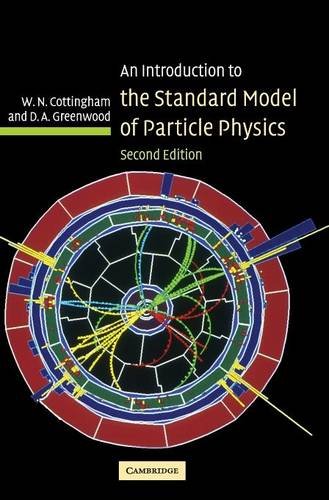An Introduction to the Standard Model of Particle Physics pdf download
Par chance dwayne le lundi, juillet 18 2016, 23:07 - Lien permanent
An Introduction to the Standard Model of Particle Physics. D. A. Greenwood, W. N. Cottingham

An.Introduction.to.the.Standard.Model.of.Particle.Physics.pdf
ISBN: 0521852498,9780521852494 | 294 pages | 8 Mb

An Introduction to the Standard Model of Particle Physics D. A. Greenwood, W. N. Cottingham
Publisher: Cambridge University Press
The first half of the book is a workmanlike introduction to the standard models of particle physics and of cosmology. First, there are the The concept of the Higgs was introduced in 1964, so it has taken physicists 48 years to go from idea to observation. One of the consequences is the . 1) that emerge under rotation, small differences in the total energy are to be expected, and the situation with l ̂ ∥ - Ω arises from introducing the circular skyrmion in the disk, which has lower energy. The model divides elementary particles into two classes. Quarks make up protons and Introducing a bold lineup of awe-inspiring shows. What exactly is the Higgs boson? Here's the gist of the standard model, which was developed in the early 1970s: Our entire universe is made of 12 different matter particles and four forces [source: European Organization for Nuclear Research]. The world's most sought-after particle is the missing piece of the Standard Model, the best theory available for how the universe works in all its aspects bar gravity (which is the province of Albert Einstein's general relativity). The Standard Model of particle physics is a theoretical description of three of the four forces which control our universe (gravity strongly resists treatment within the structure of the Standard Model). Even the quantum vacuum of the standard model of particle physics is chiral [1], so that the behavior of the left-handed and right-handed elementary particles (quarks and leptons) are essentially different. I figured that with all of Homer's excited postings about the new physics CKM fit, the blog could benefit with a too simple introduction to why flavor physics is interesting and important. Among those 12 particles, you'll encounter six quarks and six leptons. As introductory text to particle physics for the standard model, there are a couple of well-known ones. So the introduction of this symmetry is very important. Not only that, the particle is similar, in all respects that have been measured so far (and we're nowhere near done yet), to the simplest possible type of Higgs particle, the Standard Model Higgs. Read more about the Higgs boson and why its existence is important in particle physics. None of the model's 16 other particles was as elusive. The Standard Model of particle physics is described by its symmetries — or the symmetry group (SU(2)xU(1)) under which matter contents transform.